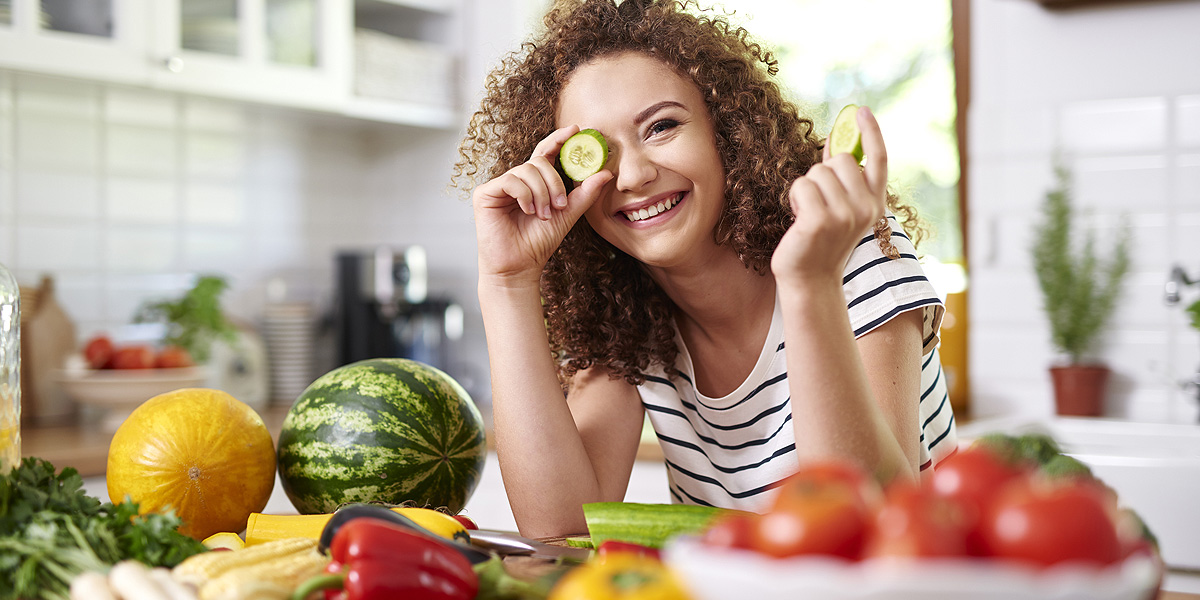The Juiciest Scale: Which Fruits and Vegetables Should You Use in Your Fresh Juice

Juicing is becoming increasingly popular as more and more people learn of the many benefits it has to offer. Overflowing with nutrients, fresh juice is excellent for your health. It can help you with weight loss and maintenance and is also an outstanding detox to rid your body of toxins.
There are tons of fruits and vegetables you can choose from when making your fresh juice. But which are the best? The more you know about juicing in general and the individual properties of different fruits and vegetables, the better able you will be to create the perfect juice concoction that’s a perfect fit for you.
What is Juicing?
Juicing is the process of extracting the juice from fresh fruits and vegetables. Since juicing by hand is a painstaking and time-consuming process, using a machine (called a juicer) has become very common.
Both fruit juice and vegetable juice contain most of the vitamins, minerals, and phytonutrients that are found in the produce. Through juicing, you are able to consume larger amounts of the nutrients due to the high concentration.
Benefits of Juicing
The reason juicing is becoming such a big trend is that it has so many benefits because it:
- Provides large doses of nutrients in compressed quantities
- Aids in weight loss
- Helps maintain a healthy body weight
- Is an excellent detox
- Promotes energy
- Can serve as a meal replacement
- Boosts immunities
- Increases mental compacity and cognitive function
- Can lift depression
- Improves focus and concentration
- Has medicinal properties
Along with the health benefits listed above, fresh juice tastes delicious.

Best Fruits and Vegetables for Juicing
Some fruits and vegetables are better than others when it comes to juicing. One reason is because some are more practical to process through a juicer. Another reason is due to the properties they possess.
You can choose fruit juice and vegetable juice that are the best in the category that best suits your needs such as choosing ones that are rich in antioxidants when you’re fighting a cold or those that are known to promote weight loss if you’re trying to drop a few pounds.
Check out some of the best fruits and vegetables for juicing and the properties they contain:
Apples
Apples are at the top of the list for juicing. They are packed with antioxidants to boost immunities. They contain nutrients and fiber that aid in digestion. Apple juice tastes great and goes well with most any other fruit or vegetable and evens out bitter or strong-tasting fresh juices.
Bananas
Bananas are a favorite for sweetening bland juice mixes. While bananas aren’t exactly candidates for juicing in that they don’t form a complete liquid, they are beneficial to add in as a puree for substance. They act as a natural sweetener and are loaded with vitamins and minerals like potassium, a mineral electrolyte that is appreciated for counteracting the negative effects of sodium
Pineapples
Pineapples add punch to tropical juice blends. They have generous amounts of antioxidants, anti-inflammatory, antiviral, and antibacterial properties and even help dissolve blood clots. Pineapples are also spectacular for digestive health because they contain bromelain.
Papaya
Papaya is ideal for tropical fruit and vegetable juice combinations. It has a surprising amount of vitamins and minerals in it and contains papain which is an enzyme that assists in breaking down protein so it can be utilized by the body. It is fabulous for digestion and helps replenish your supply of Vitamin C. Like bananas, papaya doesn’t come out as a juice but rather is a puree that adds texture to juice drinks.
Tomatoes
Tomatoes are great sources for vegetable juice. They are easy to process, go beautifully with most other vegetable and fruit juices, and yield a high amount of juice for their weight. They contain tons of vitamins and minerals including extra high volumes of lycopene which may keep cancer away. Juicing tomatoes is ideal because when cooked, they become more acidic. Those who can’t tolerate them in sauce usually do quite well with them in juice.
Carrots
Carrots are one of the most common vegetable juice ingredients. They blend right into most fruit and vegetable combinations and are loaded with nutrients. Carrots are known for cleansing the digestive system, lowering blood pressure, and are great for vision. They also help balance sodium.
Oranges
Ahhh, that burst of sunshine oranges add to fresh juice is amazing! They are flowing with Vitamin C and other vitamins and minerals that provide ample antioxidants to keep you well and free of diseases. Plus, they taste incredible.
Celery
Celery juice has been trending for a while now and why wouldn’t it be? It is jam-packed with nutrients and has wonderful benefits like assisting in weight loss, promoting digestive health, helping your body stay hydrated, and decreasing inflammation. Celery doesn’t have a lot of taste so it can be slipped into most any concoction.
Berries
Strawberries, blueberries, raspberries, cranberries, and blackberries are high in antioxidants, so they help keep you well. They are popular in fresh juice drinks because they add tart or sweetness and aesthetic value as well.
Spinach
Spinach is more popular in juice than it is as a cooked side dish, according to many. Fresh spinach adds life to fresh juice and tons of nutrients. Spinach is rich in iron so it is an excellent source of energy. It also contains oxalic acid which can interfere with absorption of calcium, so it’s recommended to limit spinach in your juice to 2-3 times per week.
Kale
Like spinach, kale is loved by many as an ingredient in juice even to those who don’t care for it’s taste when cooked. Kale is high in iron and Vitamin K among many other nutrients. It’s fabulous for digestion, curbs your appetite, and will help keep you well due to all the antioxidants it contains. It’s also an amazing energy booster.
What is the Yield of a Recipe in Juicing?
The yield of a recipe in juicing is the amount of juice it makes. It’s important to note the yield of a recipe because it can be much different than you expect it to be. Typically, you can expect to get 10-12 fluid ounces out of one pound of produce but that’s not always the case. Much depends on if you are including the pulp in your drink or separating it out. When figuring out a diet plan that includes fresh juices, you’ll want to pay close attention to the yield when preparing your produce.
Squeeze the Day
Fresh juice is a tasty and smart way to get the most out of your nutrient intake. From jump starting your mornings to winding down from a busy day, juice is the perfect addition to any day.


